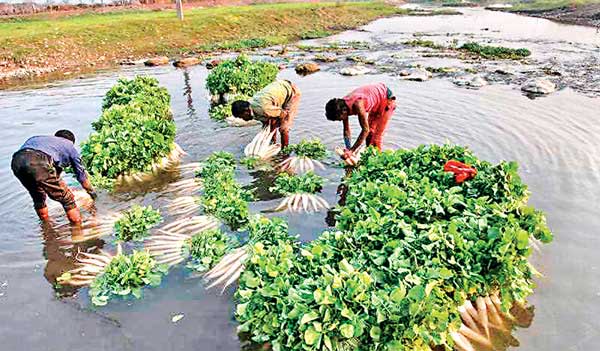16 Mar 2016 - {{hitsCtrl.values.hits}}

By Bishal Chalise
South Asia’s economic potential has long been constrained by low levels of economic integration. Despite being closely linked geographically, culturally and historically, intra-regional trade is very low. A major problem has, of course, been political difficulties within and between South Asian countries. But an important, and overlooked, barrier to greater economic integration is the poor quality and inadequate investment in infrastructure in the region. The newly established Asian Infrastructure Investment Bank (AIIB) can play a pivotal role in fixing this problem.
For a long time, infrastructure bottlenecks have been recognised as a barrier to regional trade and economic integration. Access to infrastructure in South Asian countries is limited and the quality of available infrastructure is also poor. In Bangladesh, for example, only 39 percent of the rural population has access to road transportation. India has the second largest road and rail network in the world, but half of these roads are not paved and cannot be used in all seasons.
Despite huge potential in electricity generation, people in the region consume less than 655 kilowatts per capita in intermittent electricity supply in 2012, which is less than one fifth of that in East Asia.
The situation for cross-border infrastructure is even less encouraging. A telephone call from Nepal to India is more expensive than calling to the United States or Europe. Cargo trucks waiting three to five days at the border for clearance from customs is normal. Despite sharing a nearly 3000 kilometre-long land border, shipping between India and Pakistan has to go via Dubai. As a result, the cost of trading across borders in South Asia is prohibitively high.
According to the World Bank, South Asia has nearly US$2.6 trillion in shared gross domestic product (GDP). While overall trade flows are growing, intra-regional trade among countries is still less than 5 percent of total trade. This is far less than that within ASEAN (25 percent) or NAFTA (58 percent).
Despite this, investment in in-country and cross-border infrastructure has been inadequate over the years. This has created a huge infrastructure investment gap in the region with supply trailing far below demand.
It is estimated that South Asian countries need to invest around 7.6 percent of GDP in infrastructure per year if they are to achieve economic growth of 7.5 percent. This amounts to an annual capital investment of US$88 billion in new investment and in maintaining existing capital stock. Currently, actual average investment in infrastructure is around US$28 billion per annum — the lowest in the world, excepting sub-Saharan Africa.
The South Asian Association for Regional Cooperation (SAARC) — which is comprised of Afghanistan, Bhutan, Bangladesh, India, Pakistan, the Maldives, Nepal and Sri Lanka — made an attempt to narrow the investment gap recently. For a decade, SAARC negotiated a free-trade agreement called the South Asian Free Trade Agreement (SAFTA). Coming into effect in 2006, SAFTA aims to facilitate the ‘development of communication systems and transport infrastructure’ to facilitate intra-regional trade. Still, the pace of infrastructural reform envisioned by the agreement has been slow.
Other similar initiatives include the establishment of the South Asian Development Fund (SADF) in 1996. Later reworked as the SAARC Development Fund (SDF), its aim is to act as an umbrella funding mechanism for all regional development projects, including infrastructure. But with capital of only US $ 300 million, the SDF has been unable to go beyond funding some social projects. The idea of setting-up a South Asian Development Bank (SDB), led by India, has also been proposed to provide low-cost funding to member countries for infrastructure projects. But this idea has never taken-off.
There have been some unilateral efforts to improve infrastructure. India, for example, has pledged to invest US $ 138 billion in railways alone in the next five years. It has also been experimenting with the creation of a ‘National Investment in Infrastructure Fund’.
On the bilateral front, projects like the Central Asia–South Asia Electricity Transmission Project, the Nepal–India Regional Trade and Transport Project, and the Bangladesh–Bhutan–India–Nepal (BBIN) initiatives are currently underway with support from multilateral organisations like the World Bank and the Asian Development Bank (ADB). Still, there are no major cross-country highway or railway projects currently underway.
With this backdrop, the creation of the AIIB has come at the right time. The bank was established with an explicit objective to provide financing for developmental infrastructure like roads, railways, sea and airports, and power generation plants to facilitate greater economic integration in the Asia Pacific.
Although US $ 100 billion in paid-up capital may not look like much in comparison to the investment demand, the AIIB can play a key role in complementing the work of traditional multilateral lenders like the ADB and the International Finance Corporation.
The AIIB is also expected to have a longer term investment horizon, recognising the fact that returns to infrastructure spending in developing countries can be slow and sometimes low. If the AIIB can also shorten the loan assessment and approval procedures, South Asia could see an investment boom.
The involvement of the AIIB in South Asia will be welcome news for the region. Six out of the eight countries in South Asia (the exceptions are Afghanistan and Bhutan) are founding members of the bank. India, which was recently elected as a member of the board of the bank, is also likely to prefer the AIIB — with its multi-nation oversight — rather than a situation where China acts alone in what India considers its backyard. With mutual trust and support, the AIIB can help South Asia realise its shared dream of greater economic prosperity.
(Courtesy East Asia Forum)
(Bishal Chalise is a Masters student at the Crawford School of
Public Policy at the ANU)
29 Nov 2024 6 hours ago
29 Nov 2024 7 hours ago
29 Nov 2024 8 hours ago
29 Nov 2024 9 hours ago
29 Nov 2024 9 hours ago